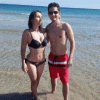Recent years have witnessed numerous studies demonstrating that various signal types and frequencies can have a significant impact on biological objects and processes. This thread is a home at LongeCity to document and discuss these studies.
To start, let's review a handful of study examples.
2016, MIT News
Unique visual stimulation may be new treatment for Alzheimer’s
Brain wave stimulation
Alzheimer’s disease, which affects more than 5 million people in the United States, is characterized by beta amyloid plaques that are suspected to be harmful to brain cells and to interfere with normal brain function. Previous studies have hinted that Alzheimer’s patients also have impaired gamma oscillations. These brain waves, which range from 25 to 80 hertz (cycles per second), are believed to contribute to normal brain functions such as attention, perception, and memory.
In a study of mice that were genetically programmed to develop Alzheimer’s but did not yet show any plaque accumulation or behavioral symptoms, Tsai and her colleagues found impaired gamma oscillations during patterns of activity that are essential for learning and memory while running a maze.
Next, the researchers stimulated gamma oscillations at 40 hertz in a brain region called the hippocampus, which is critical in memory formation and retrieval. These initial studies relied on a technique known as optogenetics, co-pioneered by Boyden, which allows scientists to control the activity of genetically modified neurons by shining light on them. Using this approach, the researchers stimulated certain brain cells known as interneurons, which then synchronize the gamma activity of excitatory neurons.
After an hour of stimulation at 40 hertz, the researchers found a 40 to 50 percent reduction in the levels of beta amyloid proteins in the hippocampus. Stimulation at other frequencies, ranging from 20 to 80 hertz, did not produce this decline.
Tsai and colleagues then began to wonder if less-invasive techniques might achieve the same effect. Tsai and Emery Brown, the Edward Hood Taplin Professor of Medical Engineering and Computational Neuroscience, a member of the Picower Institute, and an author of the paper, came up with the idea of using an external stimulus — in this case, light — to drive gamma oscillations in the brain. The researchers built a simple device consisting of a strip of LEDs that can be programmed to flicker at different frequencies.
Using this device, the researchers found that an hour of exposure to light flickering at 40 hertz enhanced gamma oscillations and reduced beta amyloid levels by half in the visual cortex of mice in the very early stages of Alzheimer’s. However, the proteins returned to their original levels within 24 hours.
The researchers then investigated whether a longer course of treatment could reduce amyloid plaques in mice with more advanced accumulation of amyloid plaques. After treating the mice for an hour a day for seven days, both plaques and free-floating amyloid were markedly reduced. The researchers are now trying to determine how long these effects last.
Furthermore, the researchers found that gamma rhythms also reduced another hallmark of Alzheimer’s disease: the abnormally modified Tau protein, which can form tangles in the brain.
2016, Effects of Heart Rate Variability Biofeedback on EEG Alpha Asymmetry and Anxiety Symptoms in Male Athletes: A Pilot Study
Heart rate variability biofeedback (HRV-BFB) has been shown as useful tool to manage stress in various populations. The present study was designed to investigate whether the biofeedback-based stress management tool consisting of rhythmic breathing, actively self-generated positive emotions and a portable biofeedback device induce changes in athletes' HRV, EEG patterns, and self-reported anxiety and self-esteem. The study involved 41 healthy male athletes, aged 16-21 (mean 18.34 ± 1.36) years. Participants were randomly divided into two groups: biofeedback and control. Athletes in the biofeedback group received HRV biofeedback training, athletes in the control group didn't receive any intervention. During the randomized controlled trial (days 0-21), the mean anxiety score declined significantly for the intervention group (change-4 p < 0.001) but not for the control group (p = 0.817). In addition, as compared to the control, athletes in biofeedback group showed substantial and statistically significant improvement in heart rate variability indices and changes in power spectra of both theta and alpha brain waves, and alpha asymmetry. These changes suggest better self-control in the central nervous system and better flexibility of the autonomic nervous system in the group that received biofeedback training. A HRV biofeedback-based stress management tool may be beneficial for stress reduction for young male athletes.
The diagram below is one of many that might have been posted here. Notice that, in the video posted above, the upper and lower values for the Brain Wave Cycle ranges are different than in the diagram below. I suggest these labels, ("gamma", "beta", "alpha", etc), are merely rough guides to the structure of brain wave frequency values and are not actually fixed in living organisms.

2014, Pulsed electromagnetic field improves cardiac function in response to myocardial infarction
Extracorporeal pulsed electromagnetic field (PEMF) has been shown the ability to improve regeneration in various ischemic episodes. Here, we examined whether PEMF therapy facilitate cardiac recovery in rat myocardial infarction (MI), and the cellular/molecular mechanisms underlying PEMF-related therapy was further investigated. The MI rats were exposed to active PEMF for 4 cycles per day (8 minutes/cycle, 30 ± 3 Hz, 5 mT) after MI induction. The data demonstrated that PEMF treatment significantly inhibited cardiac apoptosis and improved cardiac systolic function. Moreover, PEMF treatment increased capillary density, the levels of vascular endothelial growth factor (VEGF) and hypoxic inducible factor-1α in infarct border zone. Furthermore, the number and function of circulating endothelial progenitor cells were advanced in PEMF treating rats. In vitro, PEMF induced the degree of human umbilical venous endothelial cells tubulization and increased soluble pro-angiogenic factor secretion (VEGF and nitric oxide). In conclusion, PEMF therapy preserves cardiac systolic function, inhibits apoptosis and trigger postnatal neovascularization in ischemic myocardium.
2015, Increases in microvascular perfusion and tissue oxygenation via pulsed electromagnetic fields in the healthy rat brain
OBJECT
High-frequency pulsed electromagnetic field stimulation is an emerging noninvasive therapy being used clinically to facilitate bone and cutaneous wound healing. Although the mechanisms of action of pulsed electromagnetic fields (PEMF) are unknown, some studies suggest that its effects are mediated by increased nitric oxide (NO), a well-known vasodilator. The authors hypothesized that in the brain, PEMF increase NO, which induces vasodilation, enhances microvascular perfusion and tissue oxygenation, and may be a useful adjunct therapy in stroke and traumatic brain injury. To test this hypothesis, they studied the effect of PEMF on a healthy rat brain with and without NO synthase (NOS) inhibition.
METHODS
In vivo two-photon laser scanning microscopy (2PLSM) was used on the parietal cortex of rat brains to measure microvascular tone and red blood cell (RBC) flow velocity in microvessels with diameters ranging from 3 to 50 μm, which includes capillaries, arterioles, andvenules. Tissue oxygenation (reduced nicotinamide adenine dinucleotide [NADH] fluorescence) was also measured before and for 3 hours after [@ 5hz] PEMF treatment using the FDA-cleared SofPulse device (Ivivi Health Sciences, LLC). To test NO involvement, the NOS inhibitor NG-nitro-l-arginine methyl ester (L-NAME) was intravenously injected (10 mg/kg). In a time control group, PEMF were not used. Doppler flux (0.8-mm probe diameter), brain and rectal temperatures, arterial blood pressure, blood gases, hematocrit, and electrolytes were monitored.
RESULTS
Pulsed electromagnetic field stimulation significantly dilated cerebral arterioles from a baseline average diameter of 26.4 ± 0.84 μm to 29.1 ± 0.91 μm (11 rats, p < 0.01). Increased blood volume flow through dilated arterioles enhanced capillary flow with an average increase in RBC flow velocity by 5.5% ± 1.3% (p < 0.01). Enhanced microvascular flow increased tissue oxygenation as reflected by a decrease in NADH autofluorescence to 94.7% ± 1.6% of baseline (p < 0.05). Nitric oxide synthase inhibition by L-NAME prevented PEMF-induced changes in arteriolar diameter, microvascular perfusion, and tissue oxygenation (7 rats). No changes in measured parameters were observed throughout the study in the untreated time controls (5 rats).
CONCLUSIONS
This is the first demonstration of the acute effects of PEMF on cerebral cortical microvascular perfusion and metabolism. Thirty minutes of PEMF treatment [@ 5hz] induced cerebral arteriolar dilation leading to an increase in microvascular blood flow and tissue oxygenation that persisted for at least 3 hours. The effects of PEMF were mediated by NO, as we have shown in NOS inhibition experiments. These results suggest that PEMF may be an effective treatment for patients after traumatic or ischemic brain injury. Studies on the effect of PEMF on the injured brain are in progress.
---
Note: I don't understand why the authors couldn't be bothered to mention the frequency of PEMF that was used in the study abstract. I've inserted it in the pasted in abstract above in a red font: [@ 5hz].

An online viewable spreadsheet will document information about these and other studies so that we might visualize and evaluate properties of Frequency Stimulating Interventions that have positive and negative impacts.
Please don't post to this thread until I have the first few posts configured.
![]()
Edited by HighDesertWizard, 19 May 2019 - 11:09 PM.
NOTE: THIS ENTIRE THREAD IS MODERATED BY THE THREADSTARTER






























































